#modular construction
Explore tagged Tumblr posts
Text






Opel Maxx 5 Door Concept, 1995, by Bertone. The modular aluminium space frame used by the Maxx concept could be easily adapted to a number of purposes but ultimately the costs of producing a car using the system were prohibitive. Audi never made any money out of the A2 that used a similar means of construction
#Opel#Opel Maxx#concept#prototype#aluminium spaceframe#1995#Bertone#modular construction#design study#General Motors#General Motors Europe#1990s
99 notes
·
View notes
Text



I made these patterns from "Folding Techniques for Designers"
#origami#modular construction#my own posts#modular construction design#architecture#architecture student
2 notes
·
View notes
Text
Affordable Housing Fix: Living on Top of a Costco
The U.S. housing crisis has long demanded innovative solutions, and Thrive Living is stepping up with a bold new model. By blending affordable housing with retail, their upcoming Los Angeles development in Baldwin Village offers a potential blueprint for addressing housing shortages in urban markets. This $425 million project will house 800 residential units—184 of which will be designated as…

View On WordPress
#affordable housing#architecture#build to rent#California#Daniel Kaufman Real Estate#Housing Market#investing#Los Angeles#modular construction#Real Estate#real estate investing#rental market#technology
0 notes
Text
More Future Arenas of Competition – Asrar Qureshi’s Blog Post #1044
#Arenas#Asrar Qureshi#Autonomous Vehicles#Batteries#Blogpost1044#Cybersecurity#Digital Communication#Electric Cars#Modular Construction#Pharma Veterans#Semiconductors#Space#Video Games
0 notes
Text
youtube
#modular construction#aluminum framing#MHS building systems#sustainable building#prefab modules#energy efficiency#construction innovation#building design#cost savings#environmental impact#Tim Siahatgar#MHS#mhsprefab#award winning#awards#production#construction#modular homes#Youtube
1 note
·
View note
Text
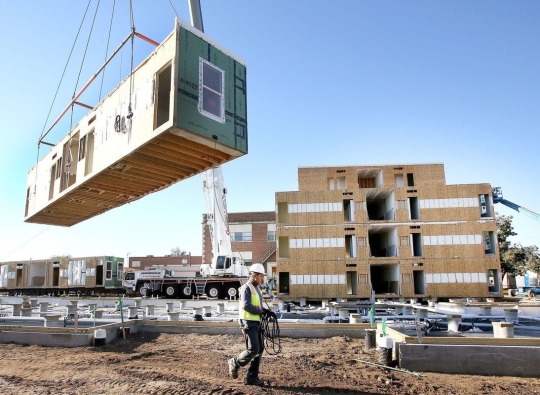
Prefab Goes Prime Time: Greystar’s First Modular Apartment Complex Signals a Housing Shift
A Bold Step in Modular Living
America’s largest apartment developer, Greystar Real Estate Partners, has made a bold entrance into modular construction. The company unveiled its first modular apartment complex near Pittsburgh, a significant move that reflects the growing appeal of prefabricated housing. Unlike traditional homes built on-site, modular units are constructed in factories and then assembled on location. While prefab homes have long been associated with affordable housing, Greystar is redefining the space with high-end amenities like gyms, pools, amphitheaters, and bocce courts.
Why Modular?
Greystar’s modular experiment isn’t just about innovation—it’s about efficiency and impact.
• Speed: Modular construction allowed Greystar to complete the project 40% faster than traditional methods.
• Labor Savings: The approach required only one-third of the typical workforce.
• Sustainability: With 90% less waste produced, the project underscores the environmental benefits of modular design.
• Cost: The development was 10% cheaper than comparable traditional multifamily projects.
A Growing Trend
Greystar’s move highlights a broader shift in the housing market. With soaring home prices and a persistent shortage of affordable housing, modular homes are gaining momentum. Other major players are jumping on the prefab bandwagon:
• Walmart launched expandable steel tiny homes for $16,000.
• Home Depot and Amazon offer mini homes for consumers looking to downsize or add backyard units.
• Airbnb’s co-founder introduced an accessory dwelling unit (ADU) business during the pandemic, catering to homeowners who want additional rental income or flexible living space.
Old methods are solving new challenges. Modular homes currently make up less than 4% of the real estate market, but their popularity is growing. Builders are embracing the approach to meet housing demand, while consumers are drawn to its accessibility and faster turnaround times. Experts say modular units can be move-in ready in less than a year—far quicker than traditional construction timelines.
With Greystar leading the charge, modular housing could become a key solution to the affordability and sustainability challenges reshaping the real estate landscape. Is your next project ready to go modular? Let’s discuss!
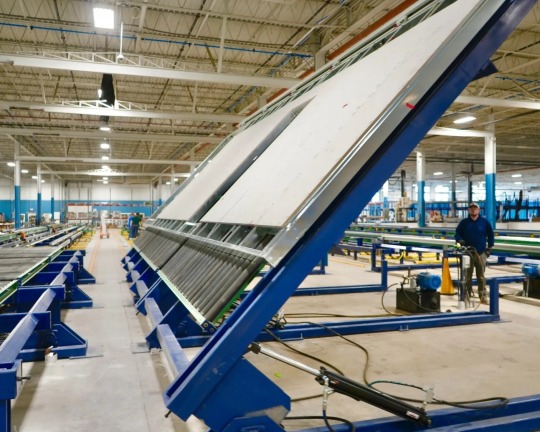
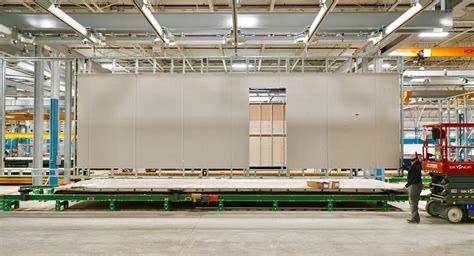
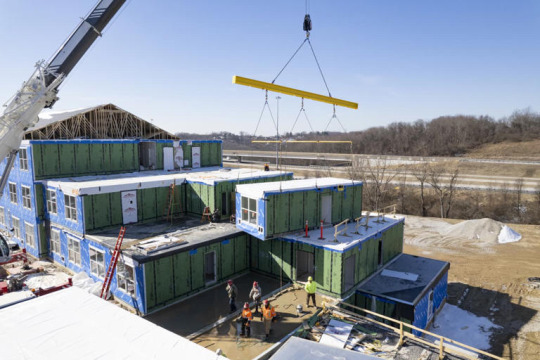
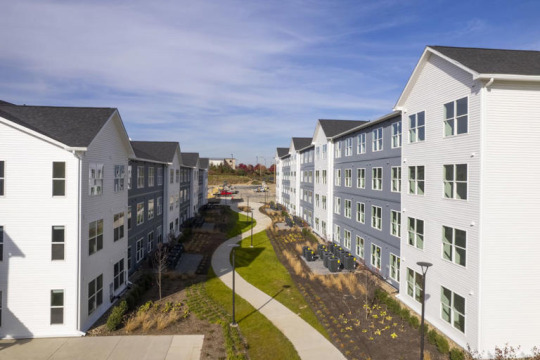
#modular construction#real estate#techinnovation#technology#tech#architecture#prefab houses#home builders#construction#investment#danielkaufmanrealestate#economy#real estate investing#daniel kaufman#housing#homes
1 note
·
View note
Text
Boost Efficiency with Modular Construction & Contractor Software for Small Businesses

Modular construction is making big waves in the marketplace today, focusing on faster work and being good for the environment. With tools like contractor software for small business, contractors can streamline project management, from design through to assembly, ensuring a smooth and efficient process. In this process, the "blocks" or "modules" of a structure are made in a separate place and then brought to the project site for assembly. Modular construction is not a passing trend but a significant shift in building design, production, and assembly. This method allows for quicker project timelines, reduced waste, and lower costs. Thus, it is a key player in the construction industry's future.
Let dives in to see how modular construction is racing forward and turning construction greener than traditional methods.
What is Modular Construction?
Modular construction consists of building the individual modules in a factory environment before taking them onto the site for assembly. These modules can vary in size and scope from whole rooms to structural components, all manufactured to exact specifications.
The high quality is ensured because each module is produced under optimum conditions, away from weather conditions that might affect on-site construction. Therefore, the process will be smooth, construction time will be reduced, and there will be minimum disruptions on the site.
Key Benefits of Modular Construction
Speed of Construction
What sets modular construction apart is that projects can be completed much faster than conventional methods. As the modules are produced in a factory, prep work and foundation tasks, onsite can happen at the same time. This concurrent action can reduce construction timelines by up to 50%, making it highly suitable for those projects needing to meet a deadline. With quick construction, buildings like homes, offices, and health centers get up and running faster.
Enhanced Sustainability
Many people in the industry praise modular construction as green-friendly and environmentally performance-oriented. In factories, construction materials are managed more efficiently, cutting down waste by as much as 90% compared to traditional construction methods. Also, off-site construction creates disturbances that help keep dust, noise, and emissions low during the building process. Eco-friendly materials and energy-efficient designs are also key features for many modular construction companies that contribute to green building movements.
Enhanced quality control
In the controlled environment of modular construction, top-notch quality is guaranteed. The steady production setting enables us to uphold precise specifications, reducing blunders efficiently on-site. The quality of finishes and structures would be higher, achieving or surpassing the standards set by building codes. By condensing the timeline, costly corrections are reduced, decreasing delays and overhead for developers and contractors.
Cost-Effectiveness
Modular construction is like a money-saving machine because it's fast, efficient, and less costly. Developers save money with projects finishing sooner, which means less time is spent paying for temporary accommodation, renting the site, and other logistics. The advantages do not stop there but also extend to fewer on-site workers, which addresses the labor shortage again and cuts down on costs.
Modular Construction’s Role in Addressing Housing Shortages
Many places around the world are facing a housing shortage as a rising issue. The housing shortage can be covered by modular construction, a quick and low-cost way to create homes. Both government officials and builders are contemplating over this technique. It's not just affordable but also swift without dipping in craftsmanship. Addressing space scarcity in crowded cities, these units are a boon to those who need to construct multi-story buildings within a minimum period.
In cities where the supply of housing falls far short of demand, such as New York, London, and San Francisco, modular apartment and micro-house complexes have favoured a change. This modular method can accelerate the delivery of highly demanded apartment projects, which reduces the time spent on construction activities.
The Environmental Impact of Modular Construction
Sustainability in the modern construction industry is no longer a buzzword, but a demand. Modular construction helps meet this need by cutting down waste and saving resources.
Here's how:
Minimized Waste: Conventional processes of construction lead to immense material waste due to inaccuracies and site adjustments. With modular construction, though, you get effective resource control. This comes from exact manufacturing methods that generate very little wood, steel, and concrete waste.
Less Emission in Transport: Transporting modules to the construction site might seem counterintuitive, but it actually reduces carbon footprints. Fewer deliveries and less construction on-site mean less pollution. Compared to regular construction methods, this approach keeps emissions low. Plus, the ability to assemble more modules means fewer and lighter trips and fuel consumption, making it all surprisingly eco-friendly!
Energy-Efficient Design: Energy efficiency is one of the leading design considerations for many modular buildings, with advanced insulation materials and the latest modern HVAC systems to reduce energy consumption. The factory-controlled environment realizes this with precise installation, improving the overall energy efficiency of the final structure.
Challenges in Adopting Modular Construction
Though modular construction presents several advantages, it isn't without its obstacles. Understanding these is essential to tapping into its maximum potential:
Initial Investment and Financing
Building in 3D, or volumetric modular construction, can be quite expensive due to the higher upfront investment required for appropriate factories and equipment, although it can be cost-effective over a very long period. Financing modular projects can also be more complicated than usual since many lenders do not know about this construction. This barrier is falling down as the industry develops and more and more financial institutions realize its advantages.
Perception and Acceptance
There is a general misunderstanding among many that modular buildings are inferior to those developed conventionally. The reverse is confirmed, with technological advancements and design enabling modular buildings to match the quality, durability, and aesthetic appeals of site-built ones. If wider acceptance is to be obtained, education regarding developers, architects, and the masses on the benefits and possibilities of modular construction is of much essence.
Logistics and Transport
Getting big modules to a construction site can lead to huge challenges, especially if the streets are narrow in city areas or the place is very far out. Transporting and setting up on-site needs careful planning and teamwork to work right. Even though this sounds tough, putting everything together at the site is usually fast and efficient, which makes up for these drawbacks.
The Future of Modular Construction: Trends to Watch
A brighter prospect is in store for modular construction, as continuous technological advancement has been driving speed, quality, and sustainability improvements.
Here are some emerging trends that could redefine this pioneering way of building.
Integration of AI and Automation
In modular factories, AI and automation can enhance production lines, cut down on worker costs, and fast-track module manufacturing. With these improvements, it would be possible to boost the scalability and precision. This makes meeting high-quality modular structure demands easier.
Adoption into Commercial and Industrial Sectors
While traditionally associated with residential projects, modular construction is finding its place in commercial and industrial construction. With modular building methods, it can mean that hospitals, schools, and offices can open their doors more quickly, serving their communities.
Sustainability as a Standard
Consequently, with more green building certifications targeted for construction projects, the potential of modular construction for energy-efficient and low-waste structures will be in demand. Expect more LEED-certified modular buildings that would push the industry towards more green ways.
Why Modular Construction is Here to Stay
This is a modular construction paradigm shift in how we build. It's set to take a top spot in reshaping the industry. This new approach lets us build faster, greener, and cheaper. Builders, contractors, and investors want a new, all-in-one way to build. Modular methods give them that.
This innovative approach allows developers and builders to build faster, greener, and more cost-effective structures.
0 notes
Text
Hexacube module (in foreground), France, 1972.
Architects: Georges Candilis, Anja Blomstedt

537 notes
·
View notes
Video
youtube
Safe and Secure Structures with the Innova Panel. The InnovaPanel offers superior fire resistance to most common building materials. Our magnesium cement insulated panels are hurricane-rated +200 mph and load-bearing up to 5 floors. Build the Building of the Future Today with the InnovaPanel.
#youtube#fire#ecofriendly#sustainableconstruction#energy efficient home#hurricane#buildwithsips#sipsbuildbetter#panelized#modular construction#modluar
0 notes
Text
Experience Efficiency with Florida's Custom Modular Home Builders
Discover how Florida's custom modular home builders, like Lynn Modular, are revolutionizing the construction industry with their innovative methods. The blog highlights the advantages of modular construction, including speed, cost savings, quality control, and environmental benefits. Modular homes are built in climate-controlled environments, ensuring precision and reducing waste. Customization options allow homeowners to create personalized living spaces. Embrace the future of home building with durable, efficient, and eco-friendly modular homes.
0 notes
Text
Unlocking the Potential of Your Property: The Advantages of Installing an ADU
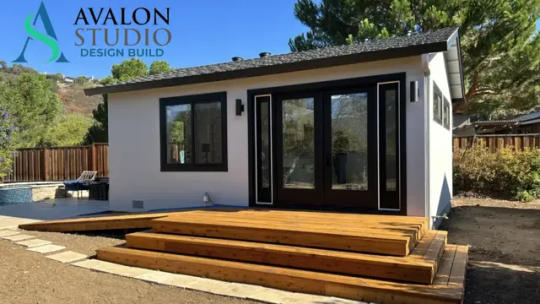
In the ever-changing real estate market, astute property owners are turning to Accessory Dwelling Units (ADUs) as a strategic means to boost both their property’s value and usability. Commonly referred to as granny flats, backyard cottages, or in-law suites, ADUs provide numerous advantages that make them an appealing choice for homeowners aiming to fully utilize their property’s potential.
The Growing Popularity of ADUs
In recent times, ADUs have become a popular alternative for adding versatile housing options. These units can be connected to the main house, constructed as independent structures on the property, or created by converting existing spaces such as garages or basements. Their adaptable design and functionality make them ideal for various uses, including earning rental income, housing multiple generations, serving as home offices, or accommodating guests.
Enhancing Property Value
A significant advantage of installing an ADU is the potential increase in property value. Expanding usable living space and creating opportunities for rental income can greatly boost a property’s market value. Furthermore, ADUs offer homeowners a valuable asset that can yield long-term financial benefits, either through rental income or by providing a comfortable living area for family members.
Adaptable Living Solutions
ADUs provide flexible living solutions that can evolve with the homeowner’s changing needs. Whether it's housing elderly parents, offering a separate space for grown children, or leasing the unit for extra income, ADUs are a dynamic solution that can cater to diverse lifestyle needs. This adaptability enhances the attractiveness of ADUs, making them a practical choice for homeowners looking to optimize their living spaces.
Potential for Additional Income
For those aiming to mitigate their mortgage costs or earn extra money, ADUs can be an excellent source of additional rental income. Renting out the unit can provide a consistent income stream that helps with mortgage repayments, property taxes, or other ownership costs. Moreover, as the demand for affordable housing continues to grow, ADUs present a profitable investment opportunity for property owners.
Boosting Community and Neighborhood Dynamics
ADUs also play a role in enriching the vibrancy and diversity of communities by offering more housing options within established neighborhoods. They foster inclusivity, accommodating various groups such as young professionals, retirees, or small families. Additionally, ADUs can alleviate housing shortages in urban settings, contributing to the development of more sustainable and resilient communities.
The inclusion of an ADU can substantially benefit property owners looking to maximize their investment. With the ability to enhance property value, generate rental income, provide adaptable living options, and improve community dynamics, ADUs are a wise investment for the future. By leveraging the flexibility and functionality of ADUs, homeowners can explore new avenues for financial gain and personal satisfaction.
Integrating an ADU into your property transforms it into a dynamic, multi-functional space that adapts to your changing needs. Whether your goal is to create a comfortable space for family, generate additional income, or simply enhance your property’s value, ADUs offer a comprehensive solution that aligns with your objectives and ambitions.
#Accessory Dwelling Unit#Efficient Space#Additional Rent#Affordable Housing#Modular Construction#Real Estate Investment#Urban Living#Compact Design
0 notes
Text
The Rise of Modular Construction: Efficiency, Sustainability, and Scalability

I. Introduction
Definition of Modular Construction
Modular construction, also called prefabrication or off-site construction, is the construction of building elements and modules inside a factory and then their assembly on the site of construction. The modules range from whole rooms, to smaller parts such as walls, floors and ceilings.
Overview of the Trend
In recent times in recent years, modular construction has become a major revolutionary factor within the industry of construction, reshaping conventional practices and methods. This development has been driven by advances in manufacturing technologies and processes, allowing firms such as Boulevard Construction, a prominent company in Sacramento that specializes in residential, commercial, and building renovations to use modular construction methods to provide efficient and innovative solutions.
II. Efficiency in Modular Construction
Streamlined Processes
One of the main benefits for modular building is the capacity to simplify the construction process. When building components are manufactured on-site in a controlled setting construction teams are able to significantly cut down on time spent on site. This means quicker completion of projects and lower labor costs.
Reduced Construction Time
In comparison to traditional methods of construction modular construction has the potential to dramatically cut down on construction timeframes. Because modular construction is made simultaneously with the site preparation and foundation work and construction are completed within just a fraction of the time it takes in traditional construction.
Cost Savings
Alongside efficiency, modular building could be a source of cost savings. The controlled factory environment permits for greater cost control and efficient use of resources. In addition, the decreased construction times translate to lower financing costs and a quicker ROI for investors and developers.
III. Sustainability in Modular Construction
Material Efficiency
Modular construction improves the efficiency of materials by reducing the amount of waste and optimizing usage of materials. Because modules are constructed to exact requirements in factories environment and there is a minimal amount of material waste when compared with traditional methods of construction in which materials are cut on site. In addition, modular construction permits for the making use of sustainable materials and the recycling of waste materials which further reduces the environmental impact.
Waste Reduction
When construction activities are moved into a factory setting modular construction allows for reduce the amount of waste that is generated on site. This does not just reduce the environmental impact of construction but also assists in reducing the negative effects of traditional construction methods, like disturbances to the surrounding communities.
Energy Efficiency
Modular construction also has advantages when it comes to energy efficiency. Factory-controlled environments offer greater insulation and better sealing of building elements that result in increased efficiency in energy use and lower cost of cooling and heating for the building's inhabitants. In addition, modular construction methods are able to incorporate renewable energy systems like solar panel systems, further improving the sustainability of a built environment.
IV. Scalability of Modular Construction
Adaptability to Various Projects
One of the major advantages in modular building is the ability to adapt to a variety of construction projects. No matter whether it's commercial, residential or infrastructure-related initiatives, these modular construction methods are able to be applied to almost every type of building. Modular construction is an attractive choice for builders and developers who want to reduce their construction time and speed up project completion.
Rapid Expansion Capabilities
Modular construction has an ability to rapidly expand, making it ideal for projects that have deadlines that are short or with changing demands. Since modules are manufactured on site, and are able to be used simultaneously with the site's preparation and foundation work The projects can be rapidly expanded or reduced to meet changing demands. This flexibility is especially valuable in sectors such as education and healthcare where speed and agility are vital.
Flexibility in Design
Contrary to what many believe the modular structure does not restrict design possibilities. Modern techniques for modular construction have allowed designers and architects to design visually appealing and innovative structures that incorporate modular elements. From contemporary homes to iconic skyscrapers, modular construction provides unlimited possibilities for creativity and still provides the benefits of sustainability and efficiency of construction off-site.
VI. Challenges and Future Outlook
Regulatory Hurdles
Despite the numerous benefits the modular construction process still faces legal challenges in certain jurisdictions. The building codes and zoning regulations could need to be changed to incorporate modular construction methods as well as there could be opposition from the traditional players working in construction. With the growing acceptance of the effectiveness and sustainability benefits of modular construction the regulatory obstacles are slowly getting over.
Quality Control Concerns
Quality control is a further problem in modular construction, especially when you have numerous manufacturers and suppliers. Making sure that manufacturing processes are consistent as well as quality guidelines is vital for the successful completion in modular projects. But, technological advances like Building Information Modeling (BIM) and automated manufacturing systems are helping increase quality control and decrease imperfections when it comes to modular building.
Technological Advancements
In the future, technological advances are predicted to accelerate the use of modular construction methods. Innovative technologies like 3D printing, robotics, and new materials are revolutionizing how buildings are planned manufactured, constructed and then assembled. These advancements will enable modular construction to be more sustainable, efficient and expandable in the coming years.
VI. Conclusion
Recap of Benefits
In the end modular construction provides a myriad of advantages, including increased efficiency sustainability, sustainability, and the ability to scale. Through streamlining construction processes, decreasing waste, and increasing the flexibility of design modular construction is changing the built environment and changing how we think about construction.
Predictions for the Future of Modular Construction
As technology advances continue to propel advancements in the construction industry and modular construction is expected to grow in popularity in the coming years. With the increasing demand for quicker and more sustainable solutions to building modular construction is an appealing alternative to conventional construction methods. With the adoption of modular construction methods builders, contractors, and policymakers can join forces to build an efficient durable, sustainable, and resilient built environment for the next generation.
0 notes
Text
Innovative Building Systems in Saudi Arabia: A Comprehensive Guide and FAQs
Introduction: Saudi Arabia is witnessing a paradigm shift in its construction industry, with a growing emphasis on innovative building systems. These cutting-edge solutions are not only revolutionizing the construction landscape but also addressing various challenges posed by traditional methods. In this comprehensive guide, we delve into the world of building systems in Saudi Arabia, exploring their benefits, applications, and answering frequently asked questions.
Understanding Building Systems: Building systems encompass a range of construction methods that integrate various components, materials, and technologies to create efficient, sustainable, and cost-effective structures. In Saudi Arabia, these systems have gained traction due to their ability to accelerate construction timelines while maintaining high-quality standards.
Benefits of Building Systems in Saudi Arabia: Speed and Efficiency: Building systems, such as pre-engineered construction, significantly reduce construction timelines. This is crucial in Saudi Arabia's rapidly developing urban centers where speed is often of the essence.
b. Cost-Effectiveness: By streamlining construction processes, building systems can lead to cost savings. Additionally, the controlled environment of off-site manufacturing minimizes material wastage, contributing to overall project affordability.
c. Sustainability: Many building systems promote sustainable practices by incorporating energy-efficient designs, recycled materials, and modular components. This aligns with Saudi Arabia's commitment to sustainable development.
d. Flexibility and Customization: Building systems offer flexibility in design and customization, allowing architects and developers to create tailored solutions that meet specific project requirements.
Applications of Building Systems in Saudi Arabia: Residential Construction: Building systems are increasingly popular in the construction of residential buildings, providing efficient and affordable solutions for housing projects.
b. Commercial and Industrial Projects: From warehouses to factories, building systems are well-suited for various commercial and industrial applications, offering quick and reliable construction solutions.
c. Infrastructure Development: The use of building systems extends to infrastructure projects, including bridges, airports, and other critical structures, showcasing their versatility.
Frequently Asked Questions (FAQs):
Q1: What are the main types of building systems used in Saudi Arabia? A: Common building systems include pre-engineered construction, modular construction, and sustainable building systems incorporating eco-friendly materials.
Q2: How do building systems contribute to sustainable development in Saudi Arabia? A: Building systems often incorporate green practices, such as energy-efficient designs, use of recycled materials, and reduced construction waste, aligning with Saudi Arabia's sustainability goals.
Q3: Are building systems suitable for large-scale projects? A: Yes, building systems are highly adaptable and can be scaled to meet the requirements of large-scale projects, offering efficiency without compromising quality.
Q4: Do building systems compromise on structural integrity? A: Not at all. Building systems undergo rigorous testing and adhere to international standards, ensuring that they meet and often exceed traditional construction methods in terms of structural integrity.
Q5: How can developers and architects benefit from using building systems? A: Building systems provide architects and developers with flexibility, cost savings, and faster project completion, allowing for greater creativity and adaptability in design.
Conclusion: As Saudi Arabia continues to build for the future, innovative building systems emerge as a pivotal force in shaping the nation's urban landscape. By addressing the need for efficiency, sustainability, and flexibility, these systems contribute significantly to the ongoing development and growth of the Kingdom. Embracing the future of construction, Saudi Arabia stands at the forefront of a new era in building methodologies.
Abdullah is a seasoned construction industry expert with over two decades of experience in innovative building systems. Passionate about sustainable development and cutting-edge construction methodologies, he has contributed significantly to the advancement of the sector. John's expertise extends to project management, cost-effective solutions, and green building practices. As an advocate for construction innovation, he aims to enlighten readers on the evolving landscape of building systems in Saudi Arabia.
Visit: https://www.msp.com.sa/product/structural-steel-building-components/
#Building Systems#Construction Innovation#Saudi Arabia Infrastructure#Sustainable Development#Pre-engineered Construction#Modular Construction#Urban Development#Construction Efficiency#Cost-effective Solutions#Green Building Practices.
0 notes
Text
Vitalbox e един от лидерите на пазара, свързан с предлагането на преместваеми обекти, изградени от модулно строителство. Компанията е лидер в предлагането на фургони и контейнери за живеене. Контейнерите са все по-често търсена опция, поради предлаганите изгодни цени, но е важно да се съобрази и какъв тип търси даден потребител - дали складови контейнери, хладилни контейнери или жилищни контейнери.
Монтажът на преместваемите контейнери се осъществява много по-бързо, в сравнение с конвенционалното строителство. Модулите се инсталират директно върху основата и са ��зключително стабилни. При изграждане на многоетажна конструкция, отделните модули се подреждат един върху друг.
#vitalbox#container#containers#modularhome#modular homes#modular construction#modular container for living
1 note
·
View note
Text
Anand Buildtech Pvt. Ltd.: A Pioneer in Building Construction Excellence
In the realm of building construction, where precision, innovation, and reliability are paramount, Anand Buildtech Pvt. Ltd. stands out as a distinguished player in the industry. With a commitment to excellence and a proven track record, this construction company has earned its reputation as a pioneer in delivering top-notch building solutions.
Anand Buildtech Pvt. Ltd.: A Legacy of Excellence
Founded with a vision to redefine the standards of building construction, Anand Buildtech Pvt. Ltd. has consistently demonstrated a commitment to quality, sustainability, and client satisfaction. Established on the principles of integrity and professionalism, the company has successfully completed numerous projects, showcasing its expertise in the construction domain.
Unparalleled Expertise in Building Construction
Anand Buildtech Pvt. Ltd. brings a wealth of expertise to the table, covering a diverse range of building construction projects. From residential complexes to commercial spaces, the company's portfolio reflects its versatility and proficiency in turning architectural visions into tangible structures.
The team at Anand Buildtech Pvt. Ltd. comprises skilled professionals who are dedicated to delivering projects with precision and efficiency. Their in-depth knowledge of construction techniques, materials, and adherence to safety standards ensures that each project meets the highest industry benchmarks.
Innovation and Sustainability
As the construction industry evolves, Anand Buildtech Pvt. Ltd. remains at the forefront of innovation. The company integrates cutting-edge technologies and sustainable practices into its projects, emphasizing eco-friendly construction methods without compromising on quality.
Client-Centric Approach
One of the key factors that set Anand Buildtech Pvt. Ltd. apart is its unwavering commitment to client satisfaction. The company prioritizes effective communication, transparency, and collaboration throughout the construction process. This client-centric approach has not only garnered trust but has also resulted in a high rate of client retention and referrals.
Embracing Challenges, Ensuring Success
Anand Buildtech Pvt. Ltd. thrives on challenges, turning obstacles into opportunities for growth and improvement. The company's adaptability, coupled with its proactive problem-solving approach, ensures that it can navigate the complexities of any construction project seamlessly.
Conclusion: Building a Future with Anand Buildtech Pvt. Ltd.
In the competitive landscape of building construction, Anand Buildtech Pvt. Ltd. has emerged as a beacon of excellence. With a rich legacy, unparalleled expertise, commitment to innovation, and a client-centric approach, the company continues to shape the skylines of tomorrow. If you are looking for a reliable partner for your building construction needs, Anand Buildtech Pvt. Ltd. is undoubtedly a name to trust.
#construction#building construction#home construction#house construction#modular construction#building contractor#sports#entertainment#infrastructure#roads#electrical#sanitation#water supply#house designs
0 notes
Text
youtube
#modular construction#aluminum framing#MHS building systems#sustainable building#prefab modules#energy efficiency#construction innovation#building design#cost savings#environmental impact#Tim Siahatgar#MHS#mhsprefab#award winning#awards#production#construction#modular homes#Youtube
0 notes